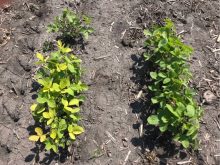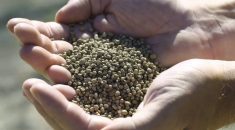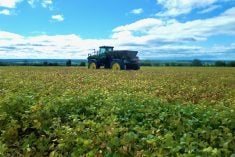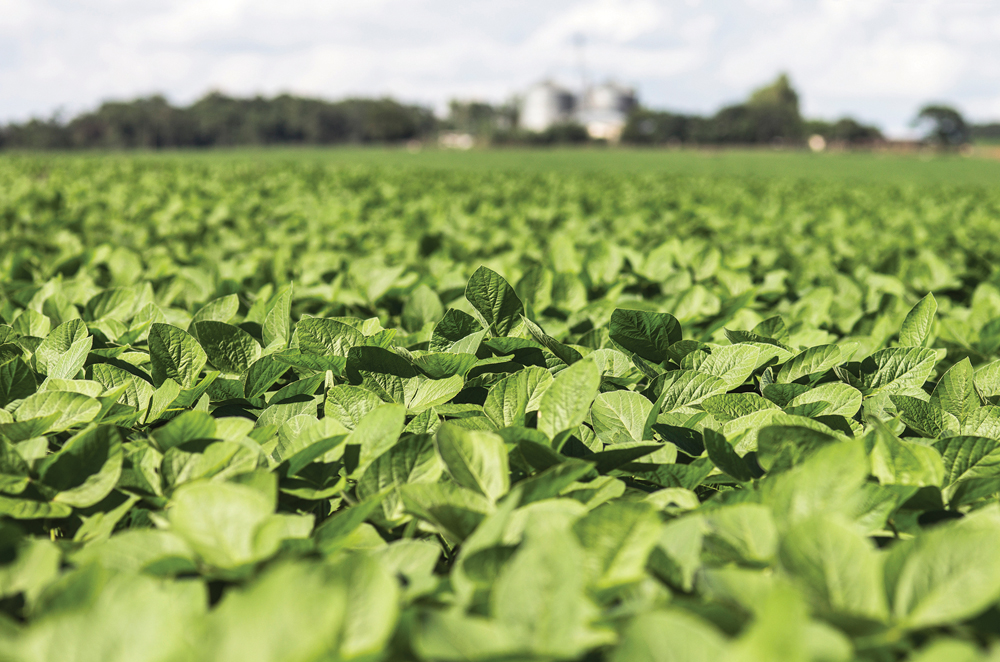Soybean protein levels in Western Canada are on the decline and lower than those found in Eastern Canada and parts of the United States. Although researchers aren’t certain of the cause, they suspect that selection for yield at the breeding and genetic levels may have something to do with it. Cassandra Tkachuk, production specialist at Manitoba Pulse & Soybean Growers, is one of the people working to find solutions to mitigate these declines.
“Researchers have found an inverse relationship between yield and protein, so as one goes up the other goes down,” said Tkachuk. “Selecting for yield has likely led to a decline over time.”
Read Also

Cancer agency reclassifies another herbicide ‘probably carcinogenic’
The WHO’s cancer research agency has now put atrazine, a herbicide well known to corn growers, in the same potential-hazard category where the agency put glyphosate.
However, she says, the relationship between varieties with higher yields and lower protein doesn’t always hold. “I think there’s more to the story than that.”
Other hypotheses include Western Canada’s shorter growing season, soil type and temperature. The shorter growing season in the north could mean that the plant has less time to allocate energy and resources into protein synthesis in the seed.
Soil type could also be a driving factor, she added, pointing to the soil’s ability to retain soil moisture. “Moisture appears to be pretty closely related to protein, and different areas experience different precipitation,” she said.
Temperature may also contribute. “In Manitoba, for example, farmers grow shorter-season varieties that now have higher yield potential than they would have before, but these are all factors that are interacting and contributing to lower protein,” she said.
Tkachuk evaluated data sets from several Manitoba research trials to see what parameters impact protein. These studies looked at plant population and planting dates, as well as fertilizer studies that evaluated phosphorus, potassium and nitrogen use.
“None of these factors really did anything to protein; there were no clear trends,” said Tkachuk. “In a nutshell, my big takeaway for farmers is that agronomically speaking and management speaking, you can’t plant earlier to get higher protein.
American researchers have also been struggling with protein levels in the more northern climates. A project spearheaded by the University of Minnesota has found that the mechanism used to measure crude protein levels may not actually be the best measure.
“They actually found that the U.S. had higher amino acid content than Brazil, which suggests a dietary benefit for livestock and human consumption,” said Tkachuk. “The results could present an interesting marketing opportunity for the more Northern-grown beans,” she said.
Can you increase protein?
Shawn Rempel, general manager of Quarry Seed Ltd., believes there agronomic practices could boost protein levels — or at least give farmers the best chance of producing adequate levels in their soybeans.
“As soybeans are legumes and fix their own nitrogen, there is a strong correlation to higher protein in conjunction to a longer nitrogen fixation period for the soybean crop,” he said. “We’ve found that in 2018, growers who planted soybeans on land with previous soybean history, used a strong inoculant program and experienced very early nodulation, had the highest protein results.”
Rempel also pointed to fertility as a possible solution. “In most cases the addition of nitrogen fertilizer won’t do much to increase protein content,” he said. “However, starting with adequate nitrogen levels will be a benefit.
Rempel says long-term data shows that strong inoculant programs pay off in terms of yield and “generally with potential protein content.”
“There’s been work to show that protein will not increase with the use of inoculants on land with previous soybean history,” he added. “That may be true, but in general, the land with soybean history is generally in geographies where low protein is a minor issue. The geographies with limited soybean history are generally the areas showing us lower protein results, such as western Manitoba and Saskatchewan.”
















